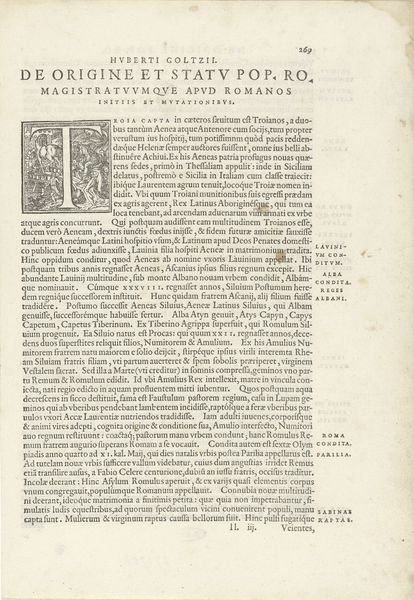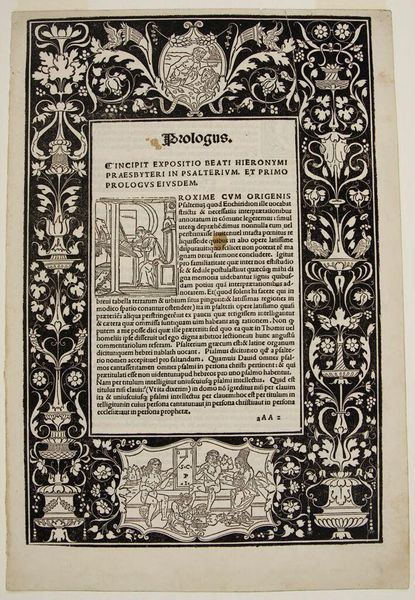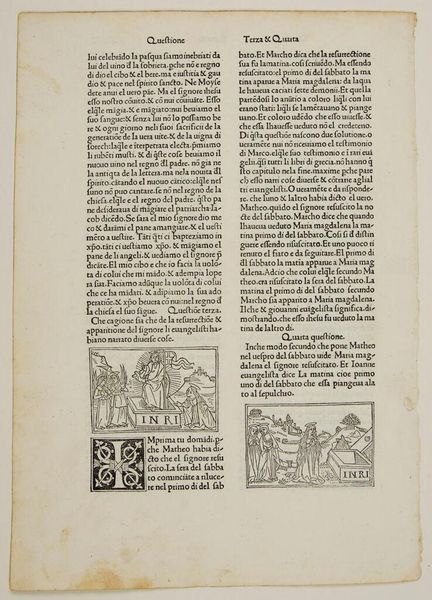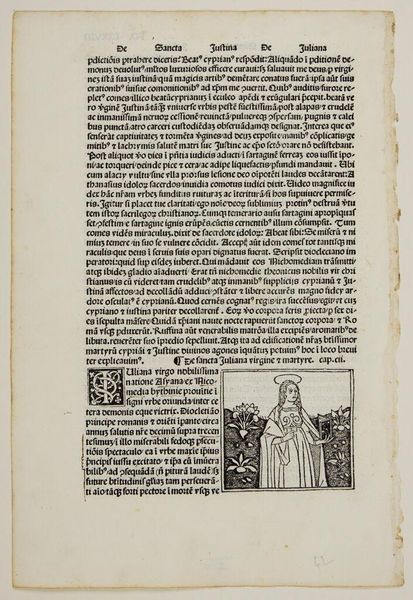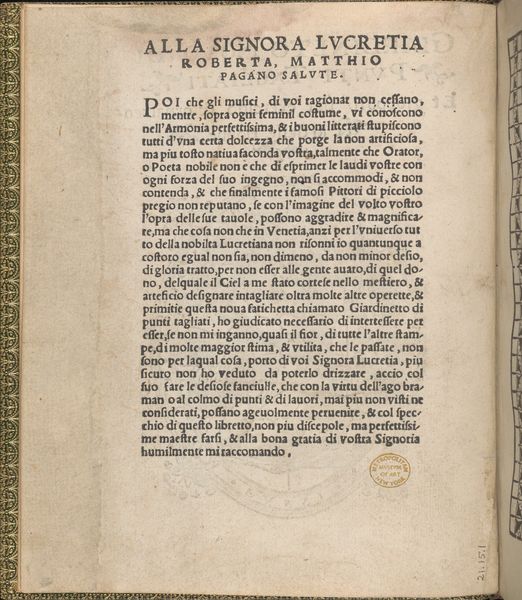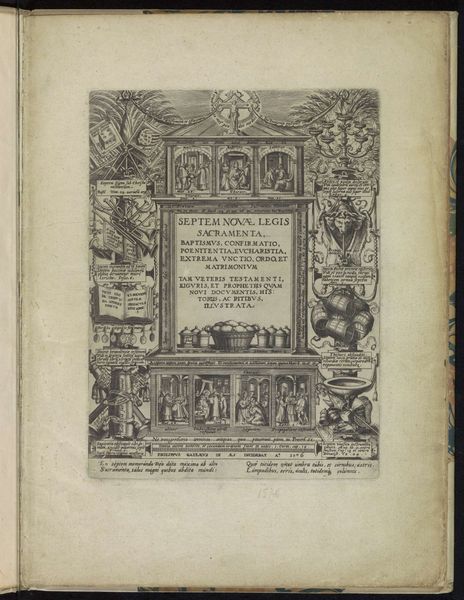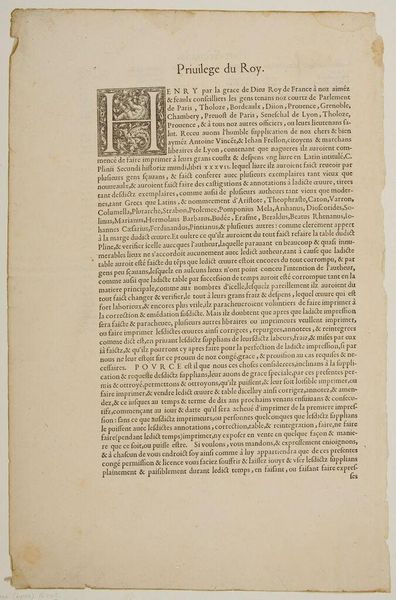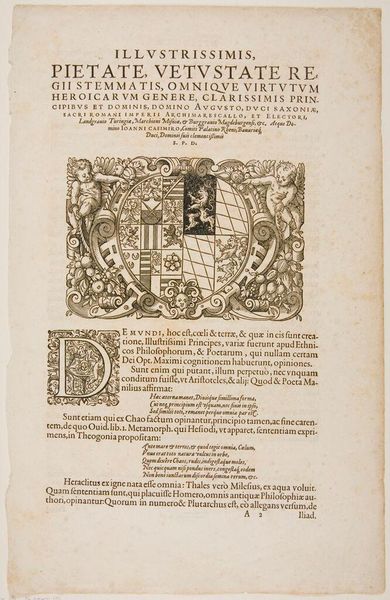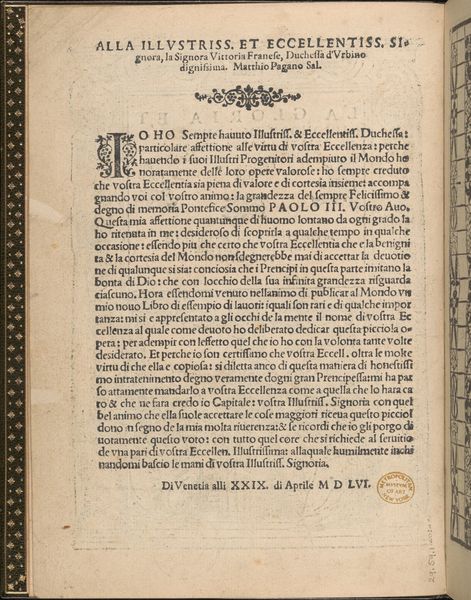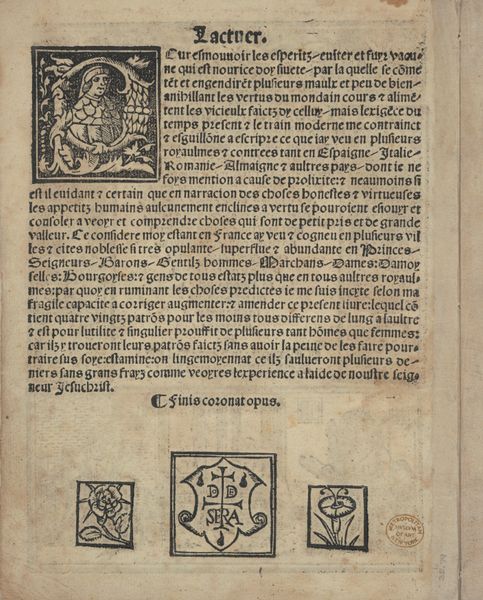
A White Line Border with Two Cartouches: "A Satyr Sacrificing a Ram," and "The Choice of Hercules" 1497 - 1498
0:00
0:00
graphic-art, print, woodcut
#
graphic-art
#
medieval
#
allegory
# print
#
text
#
woodcut
#
line
#
northern-renaissance
#
decorative-art
Copyright: National Gallery of Art: CC0 1.0
Curator: Look at this elaborate white line border woodcut, dating back to 1497 or 1498. It includes two cartouches depicting “A Satyr Sacrificing a Ram” and “The Choice of Hercules,” attributed to Benedetto Bordon. The crispness of the lines is really striking. Editor: Yes, my initial reaction is to its graphic power, the black and white contrasts really give it a dramatic feel, almost theatrical. It reminds me of stage design or a backdrop for a play. Curator: That’s interesting! Given that this work was likely produced for a book—maybe even a religious text, considering the textual components—the theatrical feeling is very appropriate, almost like a visual sermon. Notice how the two cartouches present moral choices—sensual abandon versus virtuous action? Editor: Precisely. The 'Choice of Hercules' is overtly allegorical, it's the classic struggle between virtue and vice that has defined Western moral thought for centuries. I’m curious about how its original audience would read this pairing. I think it underscores how power structures often relied on promoting these kinds of moral dichotomies to reinforce their dominance. Curator: The satyr offering a ram… it speaks to something older, more primal. I think there's an inherent tension there, placing a pagan symbol next to this very humanistic, rational allegory of Hercules. It's like Bordon is acknowledging older traditions while simultaneously presenting the new ethical frameworks of the Renaissance. Editor: And those frameworks are very much about controlling impulses, right? Hercules making the "correct" choice upholds societal order. Whereas the Satyr, unbound by such constraints, signifies a challenge to established norms, potentially representing marginalized desires or repressed energies within society. It feels relevant in a queer or gender studies context even today. Curator: So true. These two distinct symbolic narratives play off of each other in the border design to bring nuance to a specific intellectual milieu, one very intent on the construction and instruction of moral order. This is an artist visually wrestling with the inheritance of imagery in the age of expanding thought and the printed word. Editor: Indeed, by juxtaposing these seemingly opposing figures, Bordon actually exposes how intertwined these ideologies are. Ultimately, it’s not about stark contrasts; instead, it reveals how systems of morality evolve and become complex. I now have such a deeper appreciation for this image.
Comments
No comments
Be the first to comment and join the conversation on the ultimate creative platform.
